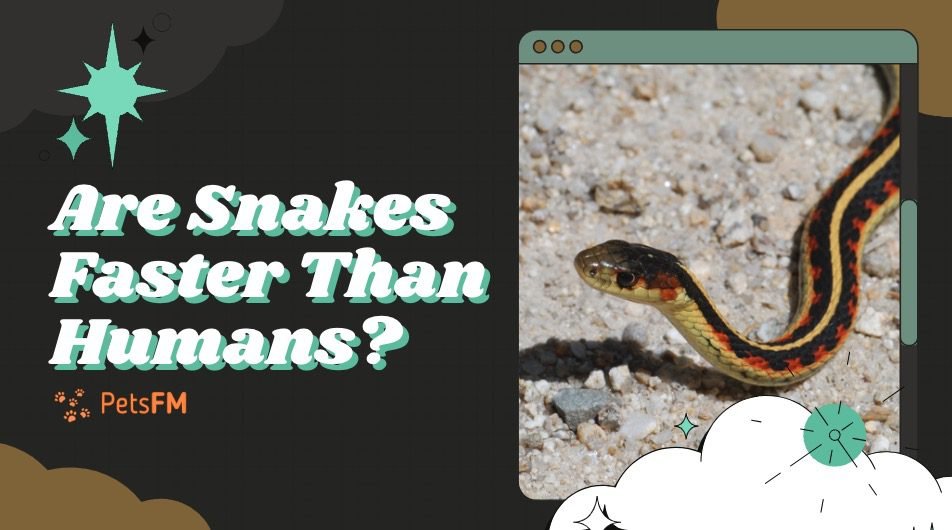![Can Snakes Taste Air? [Detailed Guide]](https://petsfm.com/wp-content/uploads/2024/02/Can-Snakes-Taste-Air-150x150.png)
![Can Snakes Taste Air? [Detailed Guide]](https://petsfm.com/wp-content/uploads/2024/02/Can-Snakes-Taste-Air-150x150.png)
![Can Snakes Taste Air? [Detailed Guide]](https://petsfm.com/wp-content/uploads/2024/02/Can-Snakes-Taste-Air-150x150.png)
Can Snakes Taste Air? [Detailed Guide]
February 26, 2024


Can A Dog Sense Snakes? Everything You Need to Know!
February 26, 2024Imagine racing a snake! Sounds strange, right? Yet, the question of whether snakes are faster than humans sparks curiosity. In this article, we’ll explore this unique comparison. We’ll look at how snakes slither and how fast they go. Then, we’ll see how humans stack up with their two-legged sprint.
From the biology behind speed to surprising facts, we’ll dive into the world of movement. Are you ready to find out who wins the race? Let’s get moving and uncover some fascinating insights about snakes and humans!
Are snakes faster than humans?
No, snakes are not faster than humans overall. Snakes have unique ways of moving, like slithering and sidewinding, but even the fastest snakes can’t match the top speeds of humans. The fastest snake, the Black Mamba, can slither at moves up to 12-13 miles per hour. In contrast, a human can run up to 28 miles per hour, a record set by athletes.
This means that in a straight race, humans can outrun snakes. However, snakes are very quick over short distances, especially when striking. This comparison shows how different creatures have evolved to move in ways that best suit their survival.


How do snakes move?
Snakes have several unique methods of locomotion that allow them to navigate their environments effectively. The most common include:
- Slithering (Lateral Undulation): This is the classic snake movement, where the snake bends into a series of S-shaped curves and pushes off objects or irregularities in the ground to move forward.
- Sidewinding: Used primarily by snakes in sandy or slippery environments, this method involves the snake lifting part of its body off the ground and moving it sideways to reduce friction and prevent sinking.
- Rectilinear Movement: This slower, more deliberate method involves the snake moving straight forward, using the scales on its belly to grip the surface.
- Concertina Movement: In tight spaces, snakes use this method to anchor their tail while stretching out their body, then pulling the rest of their body forward in waves.
What is the average speed of common snakes, and which snakes are the fastest of all?
Snake speeds vary significantly among species, with averages ranging from 1 to 3 miles per hour (1.6 to 4.8 kilometers per hour) when slithering in their natural environments. However, certain species, like the Black Mamba, can reach higher speeds of up to 12 miles per hour (19 kilometers per hour) in short bursts.
Here are three of the fastest snakes in the world.
1: Black Mamba
- Speed: Up to 12 mph (19 km/h)
- Habitat: Found primarily in the savannas and rocky hills of southern and eastern Africa, the Black Mamba is notorious for its incredible speed, making it the fastest land snake in the world. This speed allows it to escape threats and catch prey.
- Notable for: Besides its speed, the Black Mamba is known for its potent venom, among the deadliest in the world. When cornered, it’s a highly aggressive snake, and it can strike with remarkable accuracy.
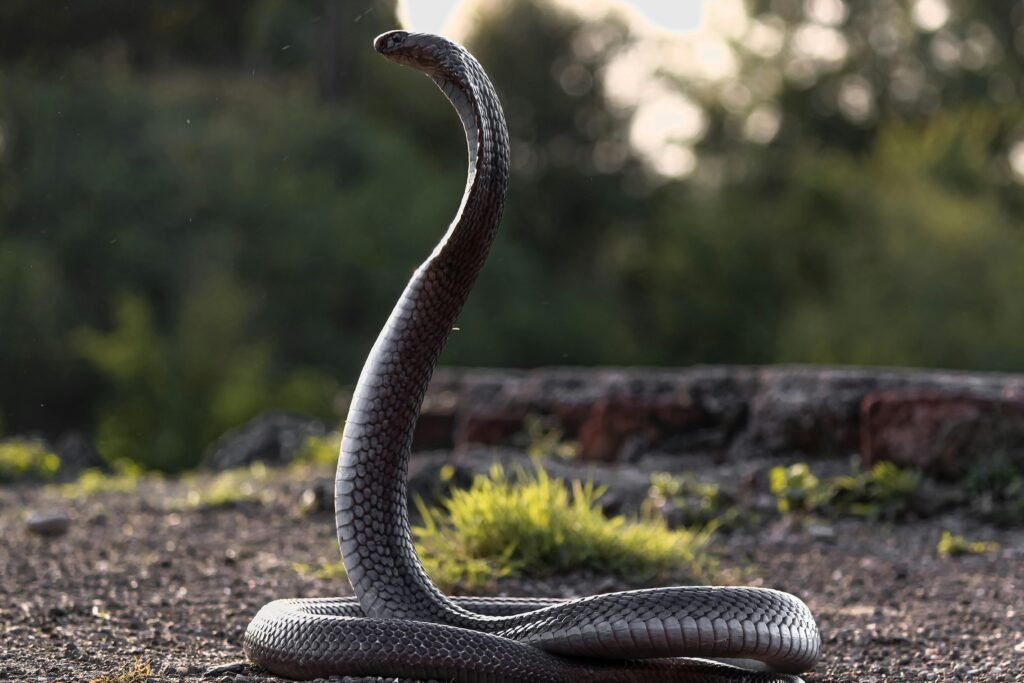

Black Mamba Snake
2: Sidewinder Rattlesnake
- Speed: Known for its unique movement, the Sidewinder can travel sideways at speeds up to 19 mph (30 km/h) in short bursts, especially when evading predators or capturing prey.
- Habitat: This snake is adapted to desert environments in the southwestern United States and northwestern Mexico. Its sidewinding motion is particularly effective on loose, sandy surfaces where other movement types might cause the snake to sink.
- Notable for: The Sidewinder uses its distinctive locomotion to reduce body contact with hot sand and increase speed. It’s also recognized by the horn-like scales above its eyes, which provide shade and keep sand out.
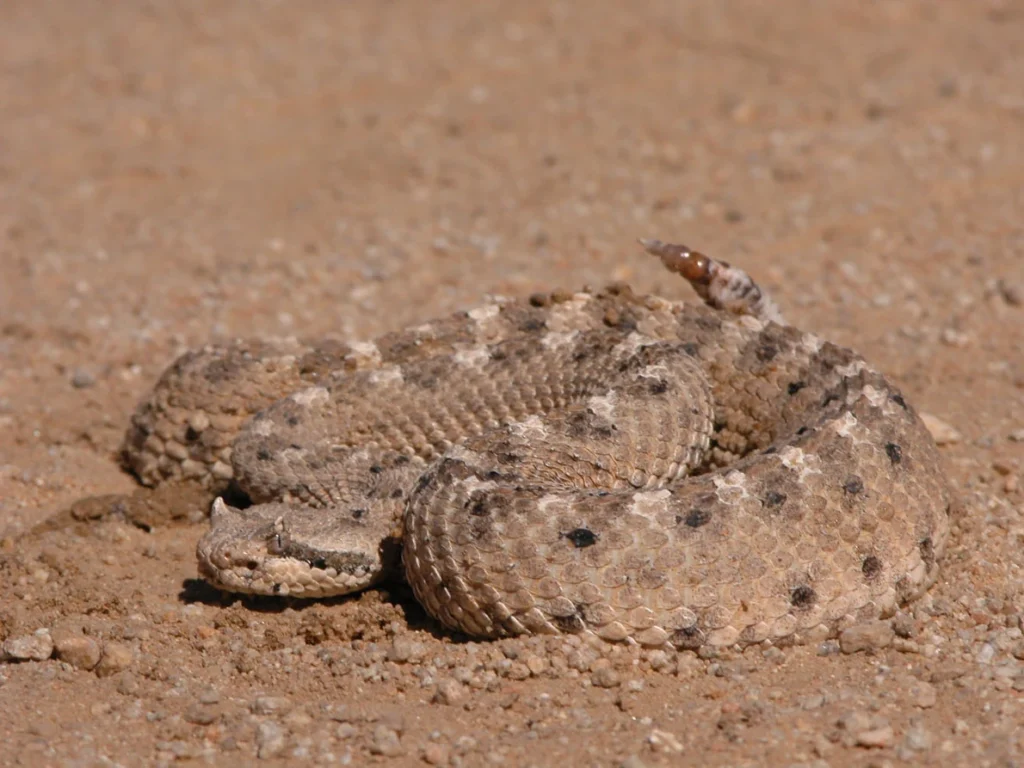

Sidewinder Rattlesnake
3: Eastern Diamondback Rattlesnake
- Speed: This snake does not move as fast as the Black Mamba or Sidewinder, typically slithering at speeds up to 2-3 mph (3.2-4.8 km/h), but it can strike incredibly fast when threatened or attacking prey.
- Habitat: The Eastern Diamondback Rattlesnake is primarily found in the southeastern United States, inhabiting dry, sandy areas, pine forests, and coastal scrub habitats. It is the largest rattlesnake species, with a formidable presence in its natural environment.
- Notable for: Its striking distance can be up to two-thirds of its body length, making it one of the most dangerous snakes in North America. The Eastern Diamondback has a distinctive diamond pattern on its back and is known for its rattling sound as a warning to potential threats. This species is also noted for its powerful venom, which it uses to immobilize and digest its prey, typically small mammals and birds.
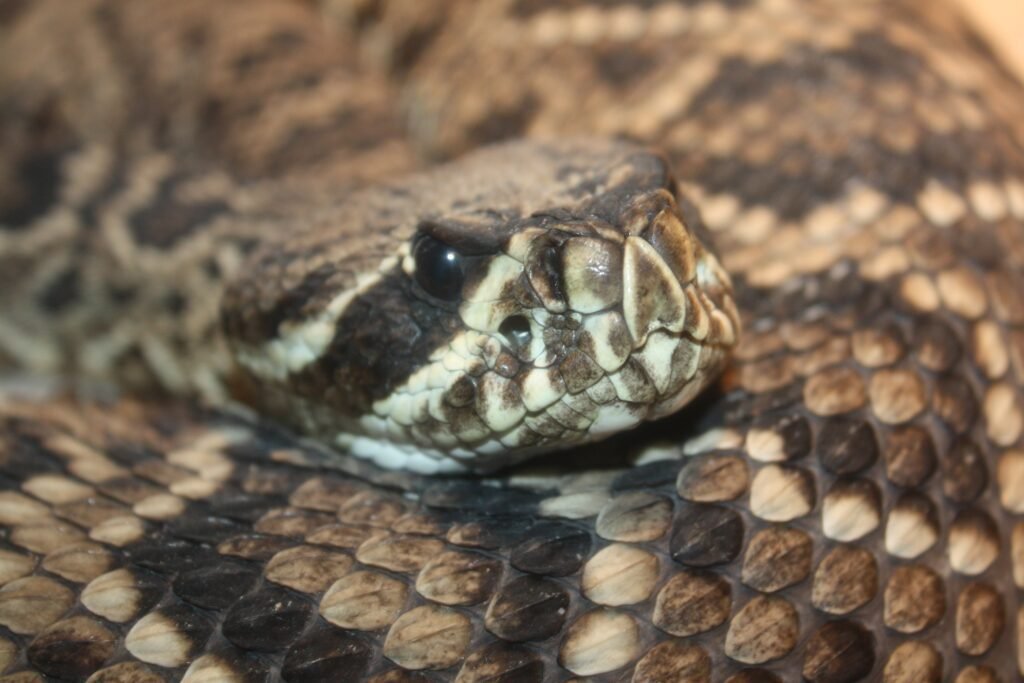

Eastern Diamondback Rattlesnake
Factors influencing the snakes’ speed
The speed at which a snake can move is influenced by several interconnected factors, from physical characteristics to environmental conditions.
- Muscle Structure: The arrangement and type of muscles along a snake’s body are crucial for its movement, enabling different speeds and styles of locomotion.
- Body Shape and Size: Longer snakes can achieve higher speeds due to the greater length of muscle that can be engaged in undulation, although this may vary with the mode of locomotion.
- Scale Texture: The scales on a snake’s belly help to grip the surface, providing the traction needed for forward movement. The finer the scales, the better the grip and propulsion.
- Temperature: Being ectothermic (cold-blooded), a snake’s body temperature directly affects its metabolism and muscle activity. Warmer temperatures generally increase a snake’s speed by enhancing metabolic rates.
- Terrain: The type of surface a snake moves over can significantly impact its speed. Smooth surfaces may offer less resistance than rough terrain, affecting the effectiveness of their locomotion method.
- Hydration and Nutrition: Adequate hydration and nutrition are essential for optimal muscle function, influencing a snake’s overall speed and agility.
Human speed capabilities
Human speed capabilities vary widely depending on the activity—walking, jogging, or sprinting—and are influenced by age, fitness level, and biomechanics.
Here’s an overview of the average speeds and records set by elite athletes for perspective.
Average walking and running speeds of humans
- Walking Speed: The average walking speed for humans is about 3 to 4 miles per hour (mph) (4.8 to 6.4 kilometres per hour (km/h)). This pace is comfortable and sustainable for most people over distances.
- Running Speed: For average runners, the speed can vary significantly based on fitness and effort level. However, a moderate running pace is typically between 5 and 9 mph (8 and 14.5 km/h).
Records and capabilities of elite athletes
- Sprinting: Usain Bolt, the Jamaican sprinter, set the world record for the 100 meters at 9.58 seconds in 2009, translating to a speed of over 27 mph (43.5 km/h) at his peak. This speed is far beyond what an average person can achieve.
- Marathon Running: The world record for marathon running (26.2 miles or 42.195 kilometres) is held by Eliud Kipchoge of Kenya, who ran a marathon in 1 hour, 59 minutes, and 40 seconds in a special event in 2019. However, the official world record in a race setting is 2:01:39, set by Kipchoge at the Berlin Marathon in 2018. This performance translates to an average speed of about 12.8 mph (20.6 km/h) over the distance, showcasing incredible endurance and speed over a long distance.
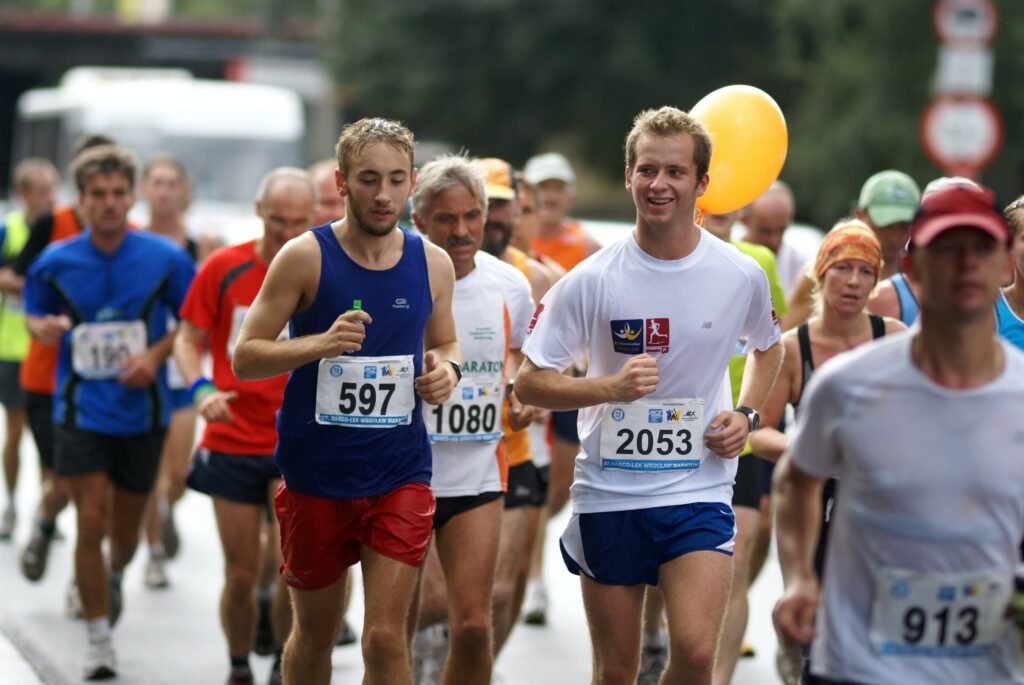

Men Running Marathon
The role of speed in the survival of humans and snakes
Speed plays a crucial role in the survival strategies of both snakes and humans, influencing their abilities to hunt, evade predators, and navigate their environments.
The evolutionary development of speed has been shaped by the specific needs and challenges each species faces over millions of years.
Speed in Snakes: survival, hunting, and evasion
- Survival and Hunting: Speed is often essential for capturing prey for snakes. Fast-moving species like the Black Mamba use their speed to strike and overpower their prey quickly before it can escape. This capability is critical for their survival, ensuring they can secure enough food.
- Evasion from Predators: Speed also serves as a defense mechanism, allowing snakes to swiftly escape predators. Even in species not known for speed, a rapid strike or a quick retreat can mean the difference between life and death.
- Evolutionary Aspects: The evolution of speed in snakes is closely tied to their ecological niche. For example, snakes that inhabit open areas, where escape cover is scarce, have developed faster movement speeds to survive. Conversely, tree-dwelling or burrowing snakes rely more on camouflage or defensive behaviors than outright speed.
Speed in humans: Survival, hunting, and evasion
- Survival and Hunting: In early human history, endurance running played a significant role in hunting strategies. Humans used persistent hunting techniques, relying on their ability to run long distances at moderate speeds to exhaust faster prey over time. This method of hunting demonstrated the importance of endurance over short bursts of speed.
- Evasion from Predators: While humans are not the fastest animals, their ability to run relatively fast and for long distances has been crucial in evading predators. The development of communal living and tools has also reduced the reliance on raw speed for survival.
- Evolutionary Aspects: Human speed and endurance have evolved through natural selection, favoring traits that enhanced the ability to cover long distances efficiently, hunt successfully, and avoid predators. The bipedal form, with long legs and specialized muscle fibers, reflects these selective pressures.
Fascinating facts and myths
Facts
- Snakes Can “Fly”: Some species, like the Paradise tree snake, can glide through the air for distances up to 100 meters by flattening their bodies, showcasing a unique form of mobility.
- Humans are Built for Endurance: Humans can outrun almost every other species on the planet over long distances thanks to our ability to sweat and breathe freely while running, traits not found in most animals.
Myths
- Snakes Can Chase Humans at High Speed: While snakes can move quickly, most species cannot sustain the speed necessary to chase a human, nor are they inclined to do so.
- Humans Are Naturally Slow Creatures: Although not the fastest over short distances, humans excel in endurance and can run at speeds that can eventually exhaust much quicker animals.
- All Snakes Slither at the Same Speed: Just like in any species, there’s a wide range of speeds among snakes, influenced by their size, species, and environment. Not all snakes are as fast as the famously speedy Black Mamba.
- The Fastest Human Sprinters Are at Their Physical Limit: Advances in training, nutrition, and technology continue to push the boundaries of human speed, suggesting we might not have seen the fastest human speeds possible yet.
FAQs
Can a human outrun a rattlesnake?
Yes, a human can outrun a rattlesnake. While quick in a strike, rattlesnakes generally move at speeds less than 3 mph (4.8 km/h), much slower than the average human running speed.
How does a snake’s diet affect its speed?
A snake’s diet can significantly impact its energy levels and, consequently, its speed. A well-fed snake has the energy necessary for rapid movement, whereas a malnourished snake may move more slowly due to lower energy reserves.
Are there any technological advancements inspired by snake locomotion?
Yes, engineers and scientists have studied snake locomotion to design robots that can navigate a variety of terrains efficiently. These snake-inspired robots are used in search and rescue missions, exploration, and medical procedures, utilizing the unique movement patterns of snakes to move through tight spaces.
Conclusion
In comparing the speed of snakes and humans, we’ve explored their unique locomotion methods, the factors influencing their speed, and the evolutionary adaptations that enhance their survival. While snakes utilize slithering and specialized movements, humans rely on bipedal running, showcasing diverse evolutionary paths.
Understanding these differences sheds light on the marvels of adaptation and evolution, highlighting how each species has uniquely evolved to navigate its environment.
This reflection extends beyond curiosity, offering insights into the intricate dance of life on Earth, driven by the continuous push for survival and efficiency.
